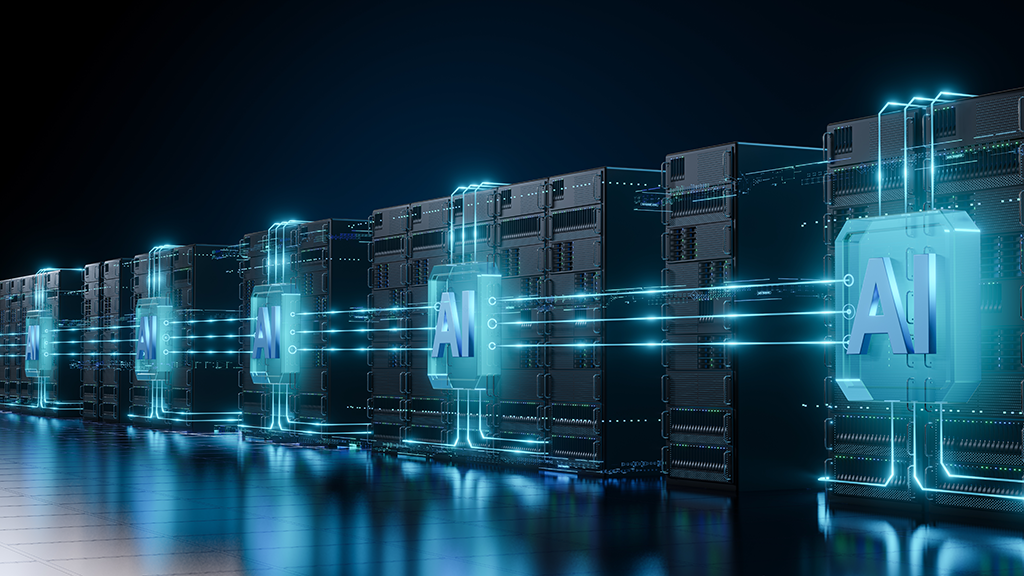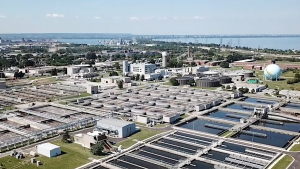The acceleration in adoption of artificial intelligence (AI) has led to a spike in data center investment over the last two years. The size of the global data center industry has been estimated by Precedence Research to reach , growing at a CAGR of 11.4% over the next decade. Most expansion is due to occur in the United States, where yearly investment in data center construction has doubled since 2022.
Similar revving up of activity has also been occurring in other large economies, especially in China and the European Union. The organizations driving today’s demand for AI data centers are cloud service providers, including Amazon Web Services, Google Cloud, Microsoft Azure, and Baidu. These companies require increasing computational capacity to host models like OpenAI’s ChatGPT and Google’s Gemini.
By 2030, data centers capable of accommodating advanced AI  of overall demand, with Generative AI contributing about 40%. AI has provided a significant spur to the evolution of data centers. The computational power needed for AI workloads is a primary driver, raising the energy consumption required. 
ÔÇÿNormalÔÇÖ data centers typically use 5-to-10 megawatts (MWs) of power. However, large hyperscale data centers are becoming more prevalent and may require 100 MWs. The International Energy Agency (IEA) says their yearly electricity consumption is comparable to the demand from . A 30-MW center was considered enormous ten years ago, but a 200-MW facility has become typical today.
Many businesses worldwide are capitalizing on the rapid expansion of AI data centers. In 2023, Blackstone and Digital Realty  to construct new AI-ready data centers in northern Virginia, Paris, and Frankfurt. U.S. server-provider Super Micro Computer is investing in locations, both domestic and in Asian markets. In the Asia-Pacific region, HCL Technologies is working with Schneider Electric to provide solutions for energy management.
┬áin the US started in Q3 2024, with corresponding high levels of investment. The Red Oak Data Center Campus in Texas spans 118 hectares and is anticipated to be completed in Q4 2027, with a 480-MW capacity. In South Carolina, the Aiken AI Data Center, a 66,425 square meter complex on 971 hectares, is expected to be finished by Q2 2027. The 1,000-MW Evanston Hyperscale Data Center in Wyoming has a Q4 2026 online target date. And Virginia’s PowerHouse 95 Data Center Campus, at 800 MW and 325,160 square meters, promises to incorporate cutting-edge power and communication solutions by Q4 2027.┬á
In addition to the United States, China remains one of the leaders in the data center industry. ChinaÔÇÖs market is┬á┬áby 2030, with a CAGR of 12.7% from 2024 on. Key players include China Telecom Corporation and China Mobile Limited. Despite US prohibitions on tech exports, to construct data centers. President Xi Jinping’s efforts to create a “digital China” have included the official launch of the “Eastern Data, Western Computing” plan introduced in early 2022. High-quality, sustainable data centers will be made possible by the plan’s demonstration projects and a new computing network architecture that combines data centers, cloud computing, and big data.
Additionally, China’s Ministry of Industry and Information Technology (MIIT) is integrating internationally owned data centers into ChinaÔÇÖs network of computing resources. Specific areas in Beijing, Shanghai, Hainan, and Shenzhen will enable foreign investors to operate data centers and perform online data processing. This project will allow American firms like Microsoft and AWS to build their own data centers in China. One of the companies participating in this project is Tesla, which can now access cloud computing services in China. According to the MIIT,┬á┬áhave been granted telecom business licenses.
China is also building the first commercial underwater data center.  will consist of 100 separate data storage units, each weighing 1,300 tons. They will store and manage millions of images on a second-to-second basis. Construction is scheduled to be finished within five years. Because the data center is submerged, thousands of tons of water and millions of kilowatt-hours of electricity will be saved annually. Natural cooling will be provided by cold seawater, minimizing the need for energy-intensive cooling devices. 
In conclusion, the world data center market is expanding impressively due to the rapid development of artificial intelligence and increasing investments in the US, China, and the EU. Larger data centers result from AI’s growing processing demands, especially for generative models like ChatGPT. Though there are improvements in energy efficiency and sustainable practices, problems remain in such areas as excessive energy usage, the sometimes-intermittent nature of renewable energy, and cybersecurity threats. With significant global investment in projects underway, the future of AI-driven data center construction seems quite optimistic.
Dmytro Konovalov has over 10 years of experience in equity research and analysis for global markets at leading international financial institutions.











Recent Comments
comments for this post are closed